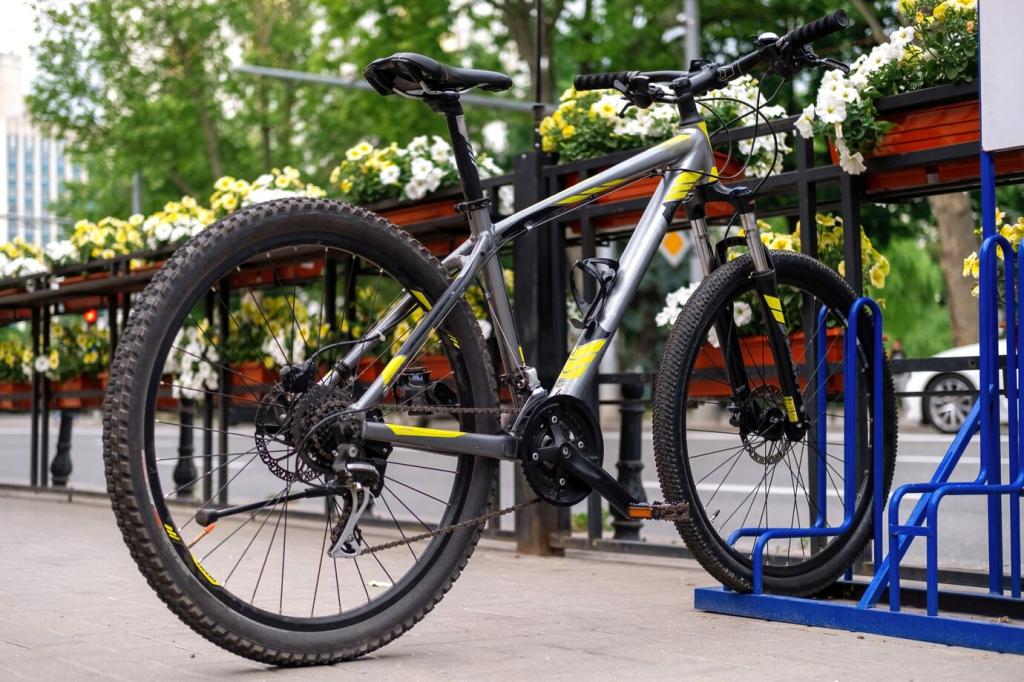
Mountain Bikes vs Road Bikes: Key Differences
Chosen theme: Mountain Bikes vs Road Bikes: Key Differences. Explore how design, components, and culture diverge—and where they overlap. Read on, share your experiences, and subscribe for fresh, rider-tested insights delivered straight to your inbox.

Geometry and Handling Dynamics
Mountain bikes favor slacker head angles and longer reach for stability on steep descents and technical features. Road bikes use steeper head angles and tighter dimensions for quick steering, efficient climbing, and precise cornering at higher sustained speeds.
Rubber Meets the Road (or Dirt)
Mountain tires are wider with pronounced knobs, run at lower pressures for traction and shock absorption. Road tires are narrower and smoother, run at higher pressures for reduced rolling resistance. Your preferred setup depends on surface, speed, and comfort priorities.

Drivetrains, Gearing, and Speed
Many mountain bikes use 1x setups for reliability and fewer dropped chains, especially on rough terrain. Road bikes typically run 2x for tighter jumps between gears and smoother cadence at high speeds during pacelines, sprints, and long climbs.
Drivetrains, Gearing, and Speed
Mountain cassettes often feature very wide ranges for steep, technical ascents. Road cassettes generally have closer spacing to fine-tune cadence and maintain rhythm. Which matters more to you: tackling walls of elevation or holding a perfect tempo?


Hydraulic Discs vs Rim Calipers
Hydraulic disc brakes dominate mountain biking for consistent power and control in dirt, dust, and mud. Road bikes once favored rim calipers for weight, but discs now offer reliable performance, especially on long descents and in unpredictable weather.
Modulation, Rotors, and Heat Management
Larger rotors on mountain bikes provide extra leverage and heat capacity for technical descents. Road rotors strike a balance between weight and control. Good modulation helps avoid skids, preserve tire grip, and keep lines smooth through tricky sections.
Fit, Comfort, and Contact Points
Flat bars on mountain bikes widen control for technical maneuvers, while drop bars on road bikes offer multiple hand positions for aerodynamics and comfort. Experiment with widths, reach, and tape or grips to dial your handling and endurance.
Fit, Comfort, and Contact Points
Dropper posts transform mountain riding, lowering your center of gravity for descents. Road riders lean on compliant posts and well-fitted saddles to reduce fatigue. Share your saddle-fitting journey—small adjustments often unlock big comfort improvements on long days.
Purpose, Terrain, and Community
Race Day to Everyday Adventures
Road bikes excel at speed, group rides, and long, fast commutes. Mountain bikes thrive in forests, deserts, and mountains where technical skill meets exploration. Which adventures call your name this season, and how will your bike answer?
Etiquette, Safety, and Shared Spaces
Trail etiquette asks riders to yield appropriately and protect fragile terrain. Road etiquette emphasizes visibility, predictable lines, and respect for traffic laws. Add your best safety tip—your insight might make someone’s next ride smoother and more respectful.
Budget, Upgrades, and Future-Proofing
Consider tires first: they redefine feel on both bikes. Mountain riders may prioritize tubeless, protective casings, or suspension service. Road riders may invest in better wheels, gearing tweaks, or power meters. What upgrade delivered your biggest performance jump?
Join our mailing list
